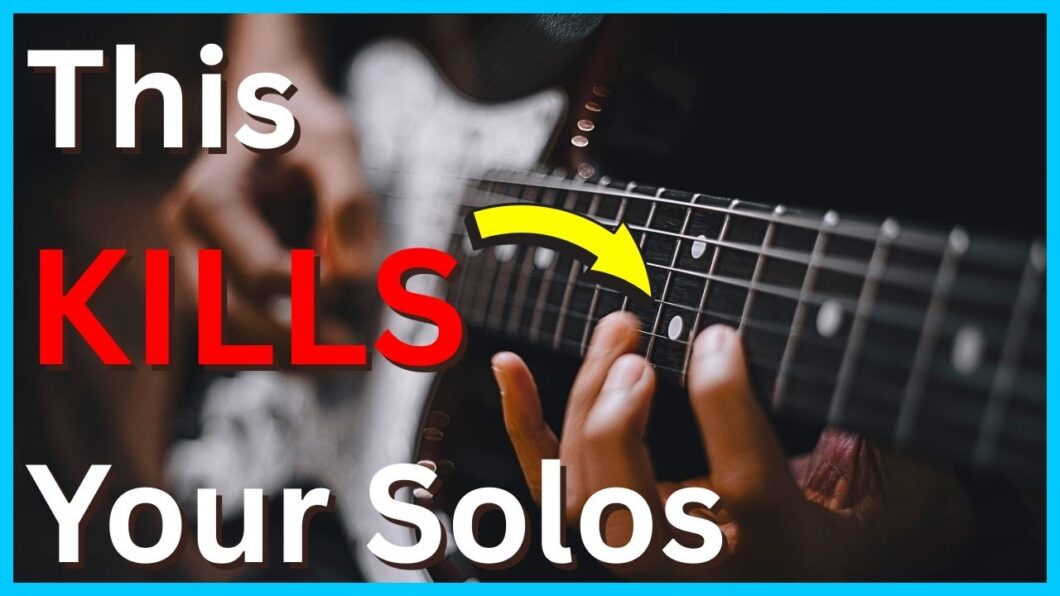When it comes to guitar solos, most players spend hours practicing scales, working on their speed, or trying to learn their favorite licks note-for-note. But here’s the hard truth: none of that matters if you’re making the one mistake that silently kills your solos every time you pick up the guitar.
This mistake has nothing to do with how fast you can play or how many scales you’ve memorized. Instead, it’s about the way you approach phrasing and structure in your soloing. And chances are, if you’ve ever felt like your solos sound flat, boring, or forgettable, this is the reason why.
The Mistake: Playing Without Intention
Most guitarists jump into a solo by immediately running through scales, bouncing between positions, or filling every second with notes. The problem? When you do this, you’re not actually telling a story with your playing. Instead, you’re just throwing notes out there.
Listeners might be impressed for a second, but without clear phrasing or structure, your solo won’t stick in their memory. Think of it like speaking in run-on sentences without pauses — eventually, people tune out.
Why This Kills Your Solos
Here’s why this mistake is so damaging:
You give away the payoff too early. Hitting your target note (like the root or the high note of your phrase) right away is like telling the punchline of a joke before the setup. It robs your solo of tension, surprise, and impact.
You never leave space. Silence is just as important as sound. Without space, your solo feels crowded and overwhelming — like someone talking without taking a breath.
Your solos lack direction. If you’re always moving up or down the scale in order, or bouncing randomly between positions, your phrases lose shape and sound mechanical instead of expressive.
How to Fix It: 5 Essential Tips for Better Solos
The good news is that fixing this doesn’t require advanced theory or shredding ability. It’s about changing your mindset and applying a few key principles:
1. Save the Target Note for Later
Avoid landing on the root or the “destination” note right away. Build anticipation. If one phrase starts on your index finger, try starting the next on your ring or pinky. This variety keeps your lines fresh and unpredictable.
2. Use Space and Rhythm as Tools
Don’t fill every gap with notes. Leave pauses — they create breathing room. Think of rhythm like beatboxing: hear patterns in your head and then apply them to your playing. You can even repeat the same rhythm with different pitches to create motifs that stick.
3. Stop Running the Scale Up and Down
Instead of playing adjacent notes one after another, use leaps. Skip strings, jump across intervals, and surprise the ear. This instantly makes your solos more musical and less like “scale exercises.”
4. Repeat Notes for Emphasis
Not every pluck has to introduce a new pitch. Sometimes, hitting the same note multiple times with different articulation (bends, slides, vibrato) adds way more emotion than rushing to the next note.
5. Change Direction Within a Phrase
Don’t always ascend or descend in one direction. Mix it up. Start climbing, then suddenly drop down, or weave back and forth. This unpredictability keeps the listener hooked.
Turning Scales Into Music
Scales are important. Technique is important. But neither of them matter if your solos don’t sound like music. The key is to shift your focus from “What notes can I play?” to “What story do I want to tell with my notes?”
By applying these small but powerful changes, your solos will instantly become more expressive, dynamic, and memorable.
Final Thoughts
The truth is, guitar solos don’t get remembered because of how fast someone played. They’re remembered because they made the listener feel something. Think of solos like David Gilmour’s in “Comfortably Numb” or BB King’s phrasing — they’re powerful not because of speed, but because of emotion, timing, and storytelling.
So next time you pick up your guitar, stop thinking about cramming in more notes. Instead, focus on why you’re playing each note, and let space, rhythm, and dynamics do the heavy lifting.
If you start practicing this way, you’ll not only stop killing your solos — you’ll finally start creating ones people actually want to listen to again and again.
